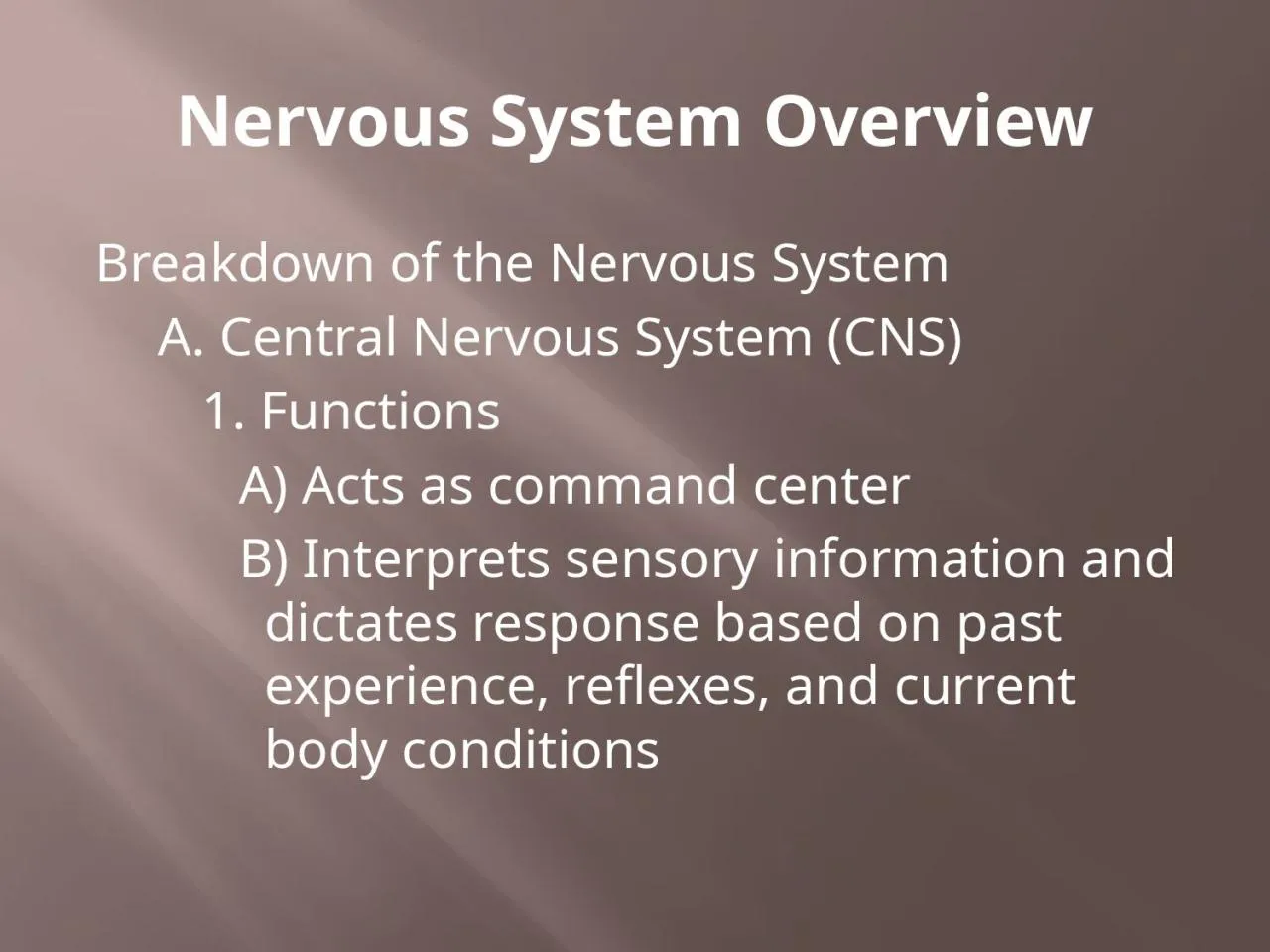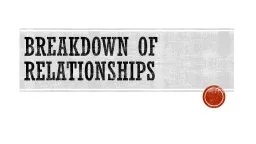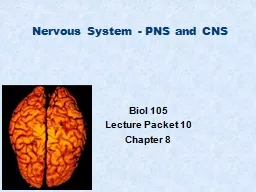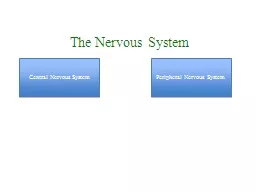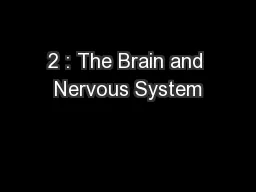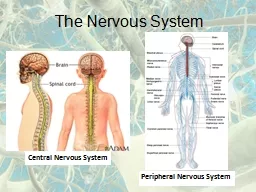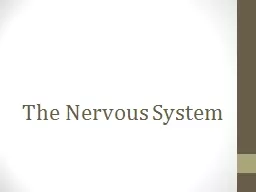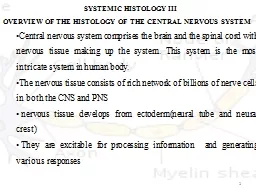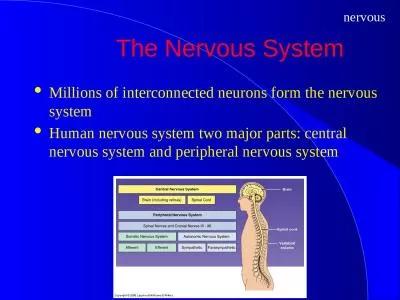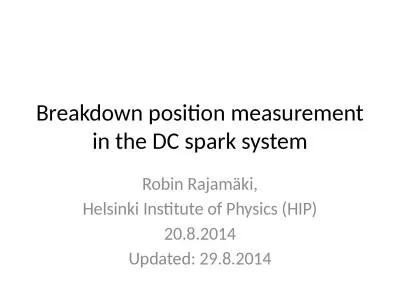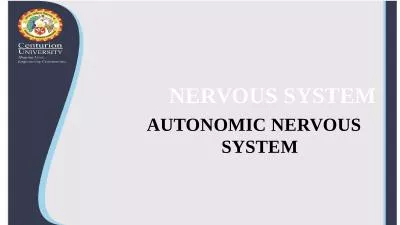PPT-Nervous System Overview Breakdown of the Nervous System
Author : gelbero | Published Date : 2022-06-01
A Central Nervous System CNS 1 Functions A Acts as command center B Interprets sensory information and dictates response based on past experience reflexes
Presentation Embed Code
Download Presentation
Download Presentation The PPT/PDF document "Nervous System Overview Breakdown of the..." is the property of its rightful owner. Permission is granted to download and print the materials on this website for personal, non-commercial use only, and to display it on your personal computer provided you do not modify the materials and that you retain all copyright notices contained in the materials. By downloading content from our website, you accept the terms of this agreement.
Nervous System Overview Breakdown of the Nervous System: Transcript
Download Rules Of Document
"Nervous System Overview Breakdown of the Nervous System"The content belongs to its owner. You may download and print it for personal use, without modification, and keep all copyright notices. By downloading, you agree to these terms.
Related Documents

